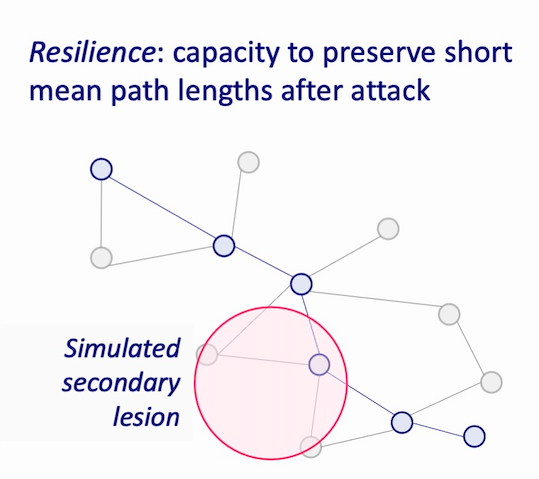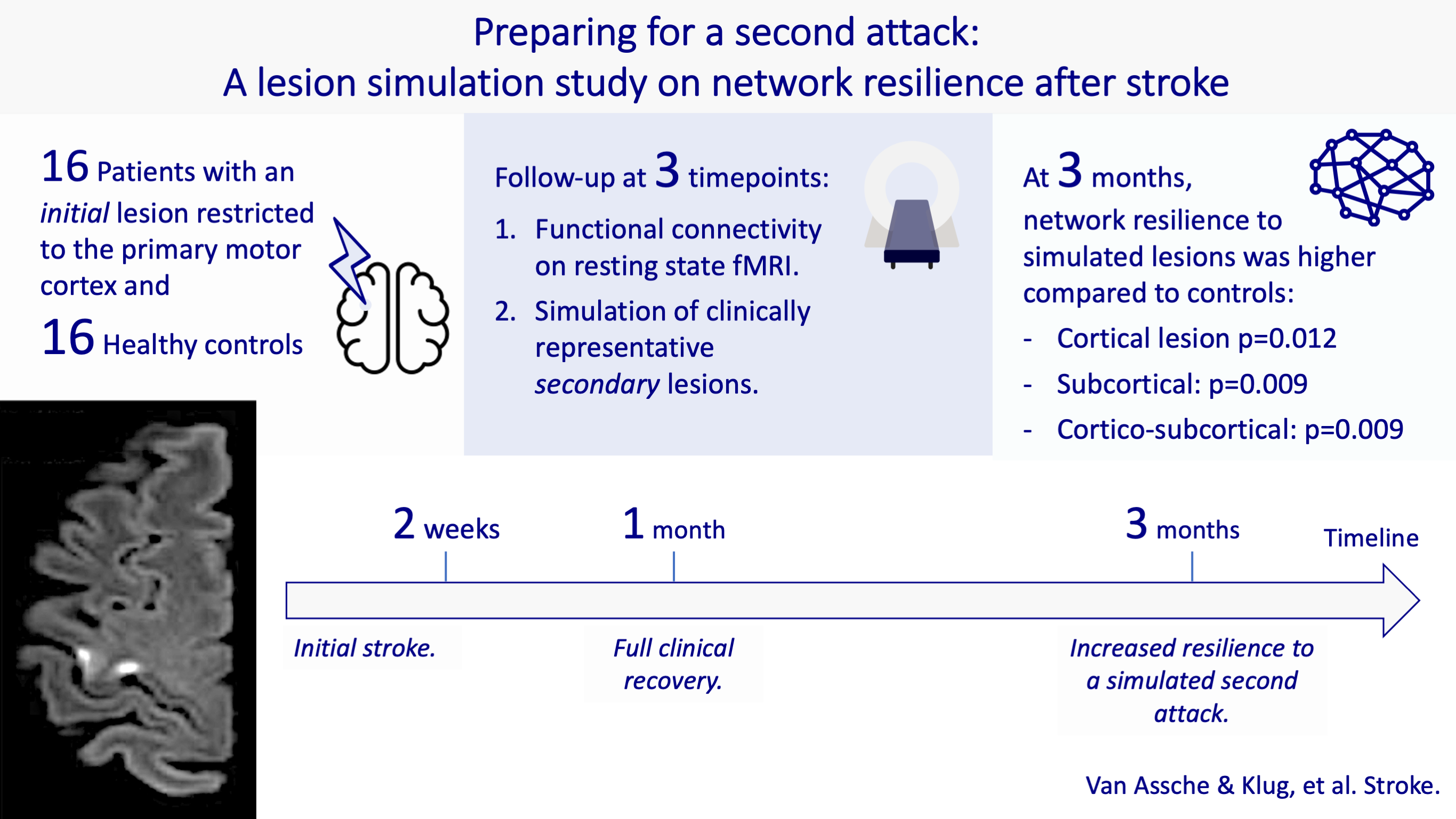Preparing for a second attack
Published:
𝗢𝘂𝗿 𝗵𝘆𝗽𝗼𝘁𝗵𝗲𝘀𝗶𝘀: the brain becomes more resilient to a second stroke after a first attack
To be able to measure resilience of neural networks observed on resting state fMRI we define it as the capacity to preserve short mean path lenghts after an attack.

𝗣𝗼𝗽𝘂𝗹𝗮𝘁𝗶𝗼𝗻:
- 16 patients with an initial lesion restricted to M1 and full recovery at 1 month
- 16 healthy controls
–> All patients had a fMRI scan at 3 timepoints (2 weeks, 1 month and 3 months after stroke)
𝗜𝗻𝘁𝗲𝗿𝘃𝗲𝗻𝘁𝗶𝗼𝗻: simulation of clinically representative secondary lesions on the obtained functional networks
𝗥𝗲𝘀𝘂𝗹𝘁𝘀: after full clinical recovery, the networks of patients having sustained a stroke 3 months beforehand were more resilient to a secondary attack
Full paper: Mitsouko Assche, Julian Klug, Elisabeth Dirren, Jonas Richiardi, Emmanuel Carrera, “Preparing for a Second Attack: A Lesion Simulation Study on Network Resilience After Stroke.” Stroke, 2022
Code availability
All code is available at my github.



